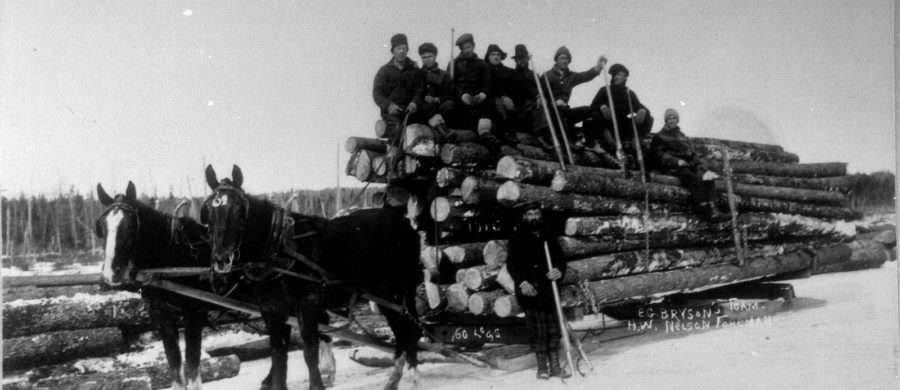
The Winter Workscape: Weather and the Meaning of Industrial Capitalism in the Northern Forest, 1850-1950
Technology’s Stories vol 8, no. 3 – DOI: https://doi.org/10.15763/jou.ts.2021.01.05.03
Between 1922 and 1947 Barbra Bird regularly accompanied her husband, a forester, on trips to lumber camps in the Adirondack Mountains of northern New York. They trekked into remote forests in the winter on snowshoes, making their way to piles of logs stacked on to skidways where Bird’s husband would measure them. The loggers Bird visited would wait until enough snow fell and they would load the logs from the skidway on to sleds for a longer haul. On one of her hikes Bird stumbled upon a hauling road that intrigued her. She wrote that, “In order to make hauling easier the roads [were] covered in ice up to two feet thick.” These iced roads could extend dozens of miles, providing a slick surface for the horse drawn sleds. The roads were created by a “sprinkler box,” a large watertight box typically 8x8x4 built on runners that held up to sixty barrels of water (image 1). These devices were made locally or even in the woods with materials at hand. Improvised spigots spread water as the sled moved in the dark of night, when temperatures were coldest. The roads were initially a quaint rural curiosity to Bird but their industrial nature became clear when she took a trip aboard a logging sled with a teamster. Bird wrote that she experienced a “numbing awe… [as] those tons of logs… were seemingly pushing us to perdition. This was not sport. It was a matter of life and death!”[1]
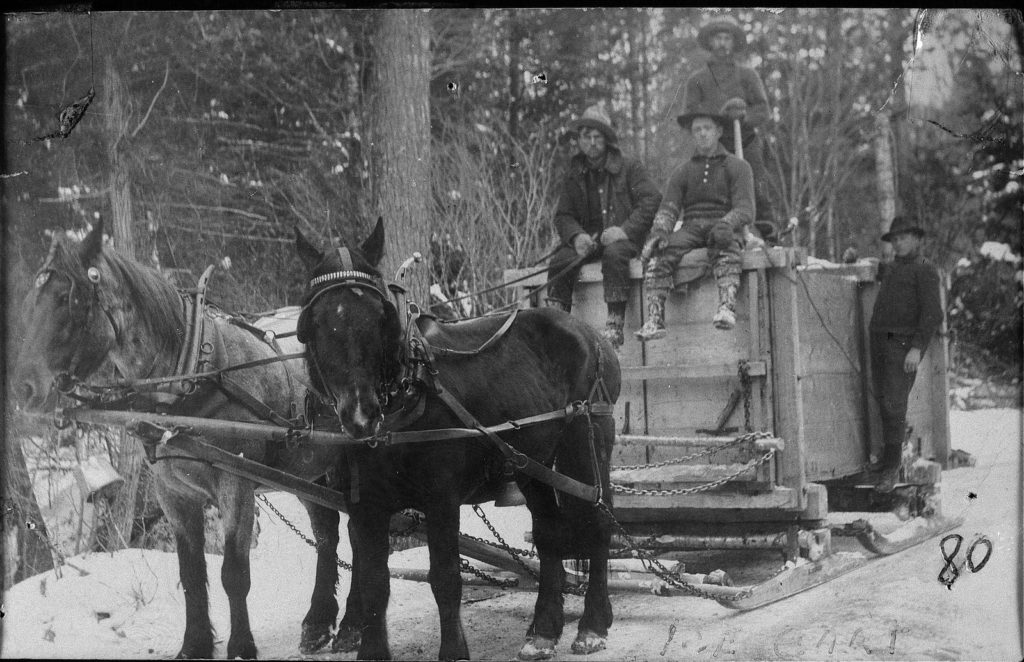
Image 1. “The sprinkler or watering box.” Image published with permission from the Patten Lumbermen’s Museum.
Bird witnessed a facet of lumbering that demonstrated an industrial dependence on winter that developed in the forests of Northern New England and New York—collectively considered the Northern Forest. Today, most Americans see snow as a hinderance to be removed at all costs. The U.S. spends $2.3 billion a year on snow removal using 22 million tons of salt per year, 137 pounds per person. An earlier American dependence on snow challenges some scholarly assumptions about industrialization. From the colonial period into the 1960s, loggers like the ones Bird visited prayed for snow and used it to increase the scale and speed of their operations. Loggers created winter workscapes, a term historian Thomas Andrews used to define “a place shaped by the interplay of human labor and natural processes. …”[2] These workscapes were connected together by rivers to make entire forest watersheds into envirotechnical landscapes, tailored to industrial forest product production.[3] Here winter was an engine; snow and ice, an industrial lubricant.
The power of naturally occurring cold has not been considered in the debates over industrialization and the limits of “organic” economies. By the nineteen teens and twenties, in the American hinterlands, fossil fuel powered machines clearly emerged as a more efficient technology compared with water, wind, and muscle power.[4] But in the Northern Forest, organic power sources working with winter weather had advantages over fossil fuels and delayed their adaptation. This essay makes that case in three parts. The first part shows that winter was initially a hindrance to Northeastern Euro-Americans and the second shows that, by the Early Republic, winter had become an asset. The third part shows how logging became dependent on the winter and used its power to industrialize.
Part I
The Northern Forest is a cold, stormy, mountainous, and forbidding place. Low pressure systems converged here “from the South Atlantic, Gulf region, and Pacific Northwest” dragging with them cold Canadian air which circulates over the Gulf of St. Lawrence Valley and Hudson Bay. Mountains obstruct the moving air currents and as the air rises up it “cools as it expands under the decreasing atmospheric pressure.” The temperature drops three- to five-degrees for every 1,000 feet of elevation gain.[5] Lake Effect snow blows east from Lake Ontario into the Adirondacks. The Gulf of St. Lawrence, the Bay of Fundy, and Massachusetts Bay create ocean or bay effect snowstorms in Maine, New Hampshire, and Vermont. The Northern Forest has four to six storms a year and snow covers the ground from three to five months.[6]
Today many Americans complain about this level of snow, and the same was true of early settler-colonists. For them winter meant increased food and fuel prices. Starvation, sickness, and frostbite were common. The Colony of Sagadahoc in present day Maine failed partly because of the cold. Historian Thomas M. Wickman has recently shown that winter was a deadly impediment to European colonists until the late eighteenth century when settlers adjusted to the climate, in some instances by adopting the Native American technology of snowshoes. According to Wickman Euro-Americans learned snow could be a military asset, but it could also be an economic boon.[7]
Part II
A great impediment to commerce in the Early Republic was friction, the impeding force created by wooden wheels rolling over rough terrain. Snow and ice reduced friction, covered ruts in roads and could increase commerce. Snow allowed a 1,500-pound load to pass on roads that would typically only hold 500 pounds. The records of five stores in Windham and Winsor Vermont show that between 1813 and 1843, almost all movement of loads weighing one or two tons took place between October and April, probably on snow.[8] The Northern Forest’s 2.5 to 3-million acres of wetlands, 68,515 miles of rivers and streams, and 16,285 lakes and ponds became slick passable surfaces during the winter.[9] Reflecting popular sentiment, Upstate New York Farmer J. Hector St. John de Crèvecœur wrote in 1782 that “[t]he constancy of this serenely cold weather is one of the greatest blessings which seldom fails us.”[10]

Image 2. “Weighted snow roller pulled by oxen.” Image in the public domain.
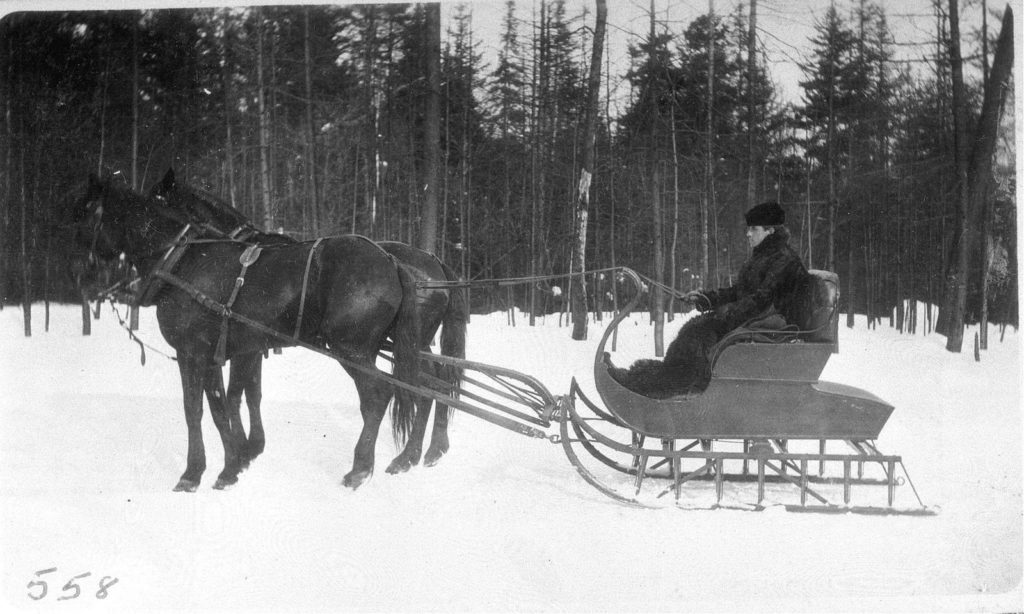
Image 3. Horse drawn sled. Published with permission from the Patten Lumbermen’s Museum.
In rural communities, people drew weighted rollers over roads compacting the snow making it slicker, sturdier, and longer lasting (image 2). Sleighs replaced wagons and horses were equipped with calked shoes (image 3). Snowball hammers removed accumulated ice and snow from horseshoes (image 4). City omnibuses and cable cars were retrofitted with runners. Utilization of snow continued for a long while in parts of the country. In Rochester N.Y. in 1917 city planners proposed keeping certain streets unplowed for sleigh traffic. Houghton County in Michigan’s upper peninsula had 900 miles of snow roads up to 1938-39.[11] (Video 1)

Image 4. “Snowball hammer used for removing snow from horseshoes.” Published with permission from the Davistown Museum.
Video 1. “Horses drawing forest products on snow roads” from Timber is a Crop (1945), part 1, (watch until 8:06).
Winter weather changed not only transportation but the very nature of work. With no work on the farm, rural families switched occupations, extracting and moving commodities like stone, lumber, firewood, or ice. Because of the benefits of the snow, surveyor Moses Greenleaf wrote of Maine in 1829 “the steady cold of the winters of the interior of the State furnished, in relation to the lumber business, means of subsistence and wealth to its citizens, which are denied to those from regions which boast a milder climate. . .”[12]
Wages dropped when farm work dried up. In Vermont, between 1790 and 1829 off season wages (November to March) were about 17% lower on average than farm season wages (April to October). The variation rates increased between 1865-1879 when there was almost a 60% premium in July wages compared to November. Seasonal wage fluctuations continued at least into the 1930s and 40s.[13]
Winter niches absorbed the labor glut and the Northern Forest grew dependent on annual economic cycles. During the middle of a reported “freak winter” of very light snow in January 1915 the Bangor Daily News reported that loggers were rejoicing because of a 15-inch snowfall. “The great lumber interest of northern Maine as well as the various industries which depend on the snow” could now continue work as normal, the newspaper reported. Because of the lack of snow that year there were “large numbers” of idle workers, both loggers and people who were typically hired for snow removal. In Bangor, the snowless winter was “overburdening the city with unemployed.”[14]
Part III
Snow created the conditions for more productive work but the snow could be improved. Americans knew ice was preferable to snow for transport but moving heavy loads on rivers and lakes was risky. In the 1850s, logger John Springer’s team broke through the ice, but luckily his crew had a system for recovering their oxen.[15] Ice needed to be harnessed and controlled.
Control was accomplished through the technology of the sprinkler box described above. “Watering” or “sprinkling” logging roads began around 1872 when winter labor was the cheapest it had been in the nineteenth century. This was important because an extra two horses and two workers were needed to operate the device. One cartload could ice about four to six miles. Without an ice road, the length of the hauling season was dependent completely on snow and consistent cold weather. With an ice road an operator could count on a ten-week hauling period even if the weather became warm. Ice roads needed to be maintained but with winter labor hired cheaply, operators could hire crews of workers for this task specifically. Ice rationalized the erratic winter workscape and made it dependable for business.[16]
Ice also improved the ability of organic power sources to move heavy loads. Depending on the length of the haul, on unimproved snow roads alone a team could haul 700 to 1,000 board feet of lumber. In typical camps with improved ice roads “a four horse team could haul 5,000 to 8,000 board feet per load, while two horses can haul from 2,500 to 4,000 feet.”[17] Some “champion loads” were said to have weighed seventy tons (image 5). Lighter loads could be moved faster and with less difficulty (image 6).[18]
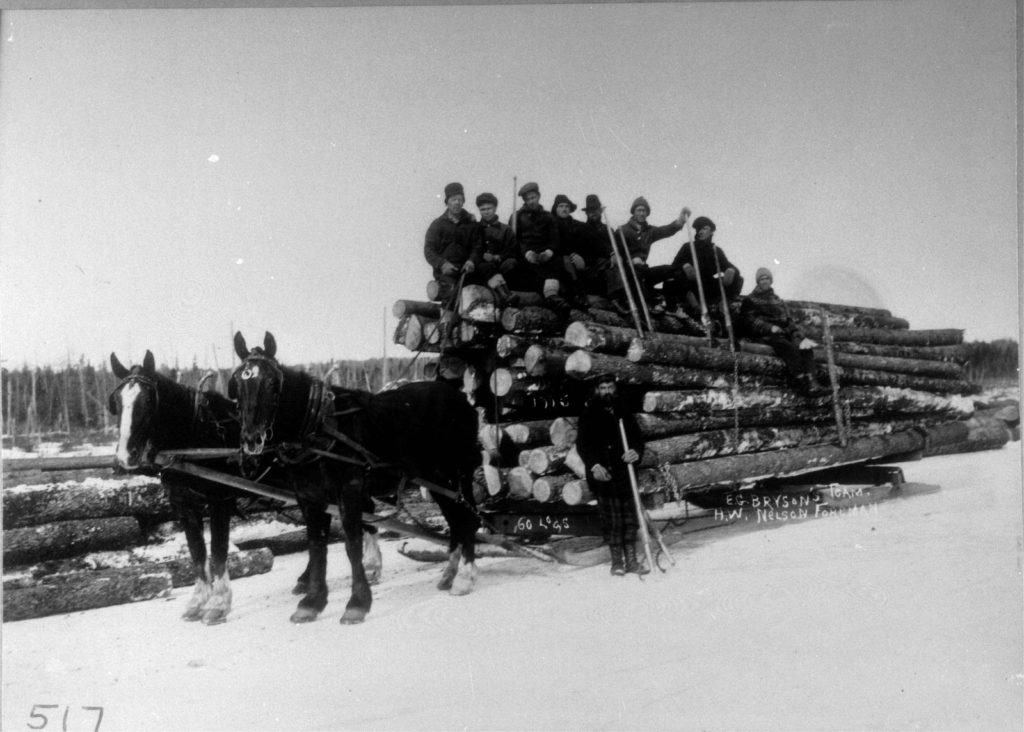
Image 5. “Heavy load of logs pulled on ice.” Published with permission from the Patten Lumbermen’s Museum.
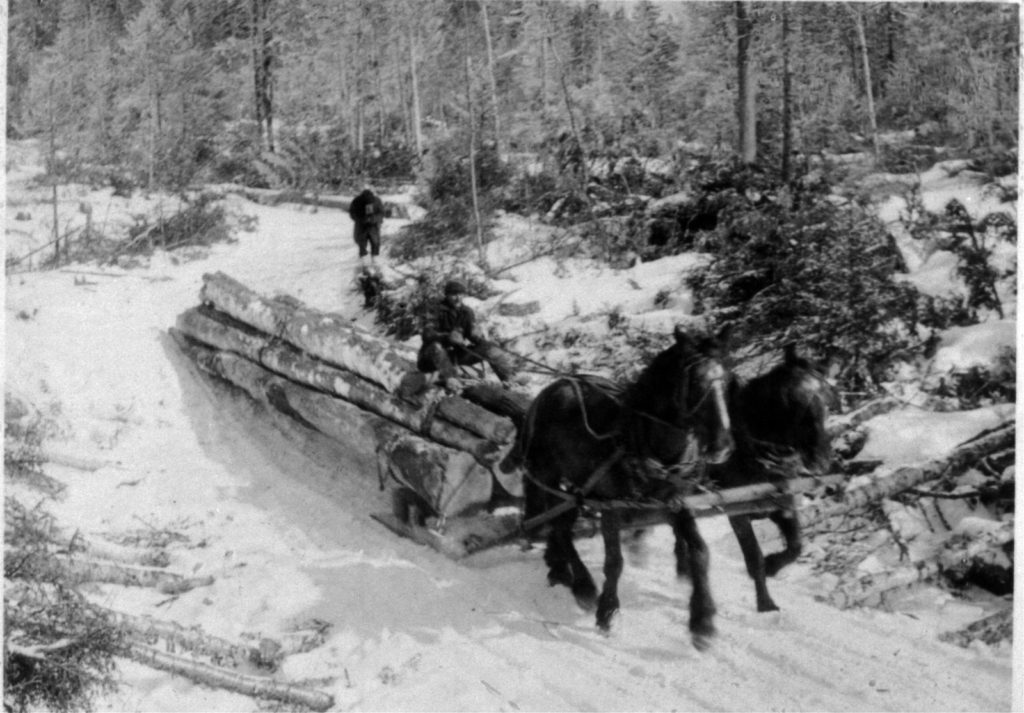
Image 6. “Speeding up the haul.” Image published with permission from the Patten Lumbermen’s Museum.
Snow was a benefit for loggers, but it also created problems. After cutting, logs or pulp wood was piled on skidways until a snowpack formed for the haul. Initially, logs were only piled high enough to be found after a snowfall because large piles were dangerous (image 7). Short piles meant skidways were spread over a larger area, and each of the numerous short piles needed to be shoveled before the haul. On large jobs, fewer, more dangerous skidways were preferred over larger numbers of skidways. Higher piling was done by “parbuckling” or “cross hauling.” This required extra horses and extra workers but allowed skidways to be stacked fifteen to twenty feet high (image 8).[19] Ice road maintenance and parbuckling show an increased division of labor in the woods, divisions made affordable to operators by cheap winter labor.
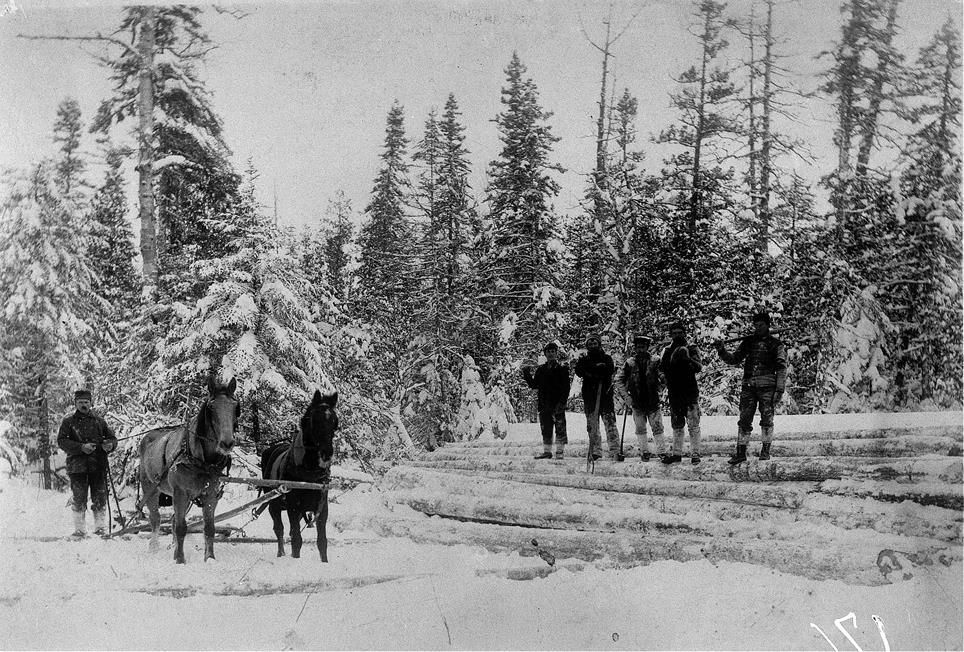
Image 7. “A short pile of logs.” Image published with permission from the Patten Lumbermen’s Museum.
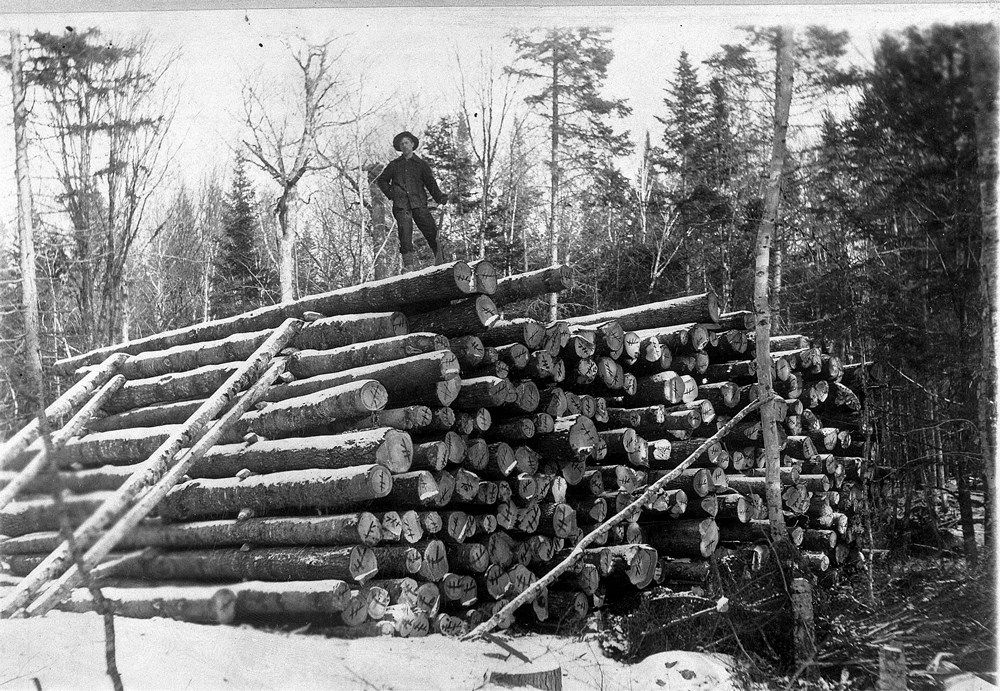
Image 8. “A large pile of logs made possible through parbuckling.” Image Published with permission from the Patten Lumbermen’s Museum
There were redundancies in the above method of storage and transportation, however. Time and resources were wasted building, loading, and unloading skidways and waiting for a snowpack. Probably around the first decades of the twentieth century, some unknown logger realized they could haul logs right after cutting. At strategic locations operators began to build one or two piles called the “hot yard” or “hot landing” where logs were drawn right after they were cut. The logs were loaded from the hot yard onto a haul sled as soon as one was available. When hot landing, teamsters had to rush to get to and from the hot landing so the logs did not stack too high on the hot landing. This speed was accomplished through well-maintained ice roads.[20] When hot yarding, any delay in the cutting or hauling meant that there was a surplus of logs at the hot yard. Hot landing sped up the entire operation and forced all the workers who were performing different specialized tasks to perform as an interconnected unit.[21] Workers became more disciplined. They were incentivized to speed up through formal or informal competitions over seasonal hauling totals.[22]
Deborah Cowen argues in her book on logistics that it was often biological bodies that must bear the physical stresses of “accelerating” logistics.[23] In these winter workscape animals were affected most by the increased speed. In a big pulp wood operation, about 500 cords or between 500 and 1,000 tons, had to be moved by each team in a ten-week period. A student at the University of Maine in the 1911-12 season estimated that well treated horses “depreciated” 15% during a season, though some estimates were higher.[24]
People worked harder, faster, and longer as they used the winter to speed up production.[25] By the 1930s, a three-man crew on a pulp operation was expected to cut and yard about five cords per day. In a ten-camp study, with an average of fifty-three men per camp, each camp produced about 469 cords a week, or about 5,160 cords in a typical eleven-week season.[26] Zealous foremen made sure the men were at the jobsite by daylight and did not leave until dark. One worker remembered “you had breakfast when the stars were shining and you ate supper when he [sic] stars were shining at night.”[27]
As the pace of production quickened workers adjusted their metabolisms. From 1901 to 1903 Charles Woods and Edward Mansfield conducted a revealing series of dietary studies that showed just how demanding logging work was. The Maine loggers in their study ate on average 6,995 calories a day and a high of 8,198. This was more calories than any other worker in the world according to the scientists (Video 2).[28] The winter was not a labor-saving technology, but a labor inducing one.
Video 2. “On the log drive workers ate four times a day. Single meals for workers could contain as many as 3,000 calories.” From Timber is a Crop (1945), part 2, (watch until 10:22).
Snow and ice did not lose their usefulness when they began to melt. When the weather warmed the molecular movement inside snow and ice crystals increased. This released a tremendous amount of energy that was used to move floating forest products to the mills (Video 3). “Log driving” rivers across the Northern Forest were “improved” for log transport. Dams were built to store the released winter energy. Workers dredged shallows, blasted boulders, and constructed booms to manipulate the movement of logs. Once improved, rivers became industrial conduits for forest product transportation. The Penobscot River in Maine serviced 2.5 million acres of timberland. The average Penobscot drive was 150 miles, though the longest was 240.[29]
Video 3. “Dam releasing water from the spring freshet to push pulp wood down river to the mills.” From Timber is a Crop (1945), part 3, (watch until 11:46).
Conclusion
At the height of the industry in the Northern Forest around 1904, logging had become dependent on the construction of winter workscapes. The winter increased the division of labor, sped up production, increased its scale, and, as I argue in my book manuscript, created class. Workscapes were connected by rivers, creating vast envirotechnical landscapes. These specific landscape alterations allowed organic power sources to remain viable in a competitive industrial American economy into the second half of the twentieth century. Studies comparing tractors to horses were conducted in the 1940s with inconclusive results. Tractors were not reliable enough to be used on a large scale until the 1950s and horses were not completely obsolete until the 1960s. By 1953 only 24% of the wood cut along the Penobscot River was transported by truck and river drives were not completely phased out in Maine until 1976.[30] With the lubrication of ice and snow and the free power of the spring freshet, why would operators spend money on fossil fuel powered machines or infrastructure? Industrialization here did not free people from dependence on nature but further imbedded the forest products industry into natural cycles.
Thinking of industrialization as essentially a move away from organic power and natural cycles limits our understanding of this important phase of human development. There are similarities between industrialization in the Northern Forest and the traditional industrialization process characterized by increased reliance on fossil fuels. After all, climate change proves that, despite the hubris of the twentieth century Anthropocentric milieu, over the last 200 years parts of humanity have only further embedded themselves in the natural cycle of carbon exchange that helps regulate global temperatures.
Author Biography: Jason L. Newton is a post-doctoral fellow in the history of capitalism and the environment at the University of North Carolina at Charlotte. His book manuscript, Cutover Capitalism: The Industrialization of the Northern Forest, 1850-1950, is a history of the changing types of labor performed by people, trees, and the landscape in the American Northeast as that area industrialized. He has also published on nature, race, and immigration. He teaches classes on capitalism and the environment.
Suggested Readings:
Thomas M. Wickman, Snowshoe Country: An Environmental and Cultural History of Winter in the Early American Northeast, (Cambridge University Press, 2018)
Thomas Wickman, “Light Blue Books: Reading about Winter Ecology and Climate History,” Uncommon Sense (blog), Omohundro Institute of Early American History and Culture, February 4, 2015.
Deborah Cowen, The Deadly Life of Logistics: Mapping the Violence of Global Trade, (Minneapolis: University of Minnesota Press, 2014)
Thomas G. Andrews, Killing for Coal: America’s Deadliest Labor War, (Cambridge, Mass: Harvard University Press, 2010)
Sara B. Pritchard, “Towards and Environmental History of Technology” in Andrew C. Isenberg, ed. The Oxford Handbook of Environmental History, (UK: Oxford University Press, 2017).
Sara B. Pritchard, “An Envirotechnical Disaster: Nature, Technology, and Politics at Fukushima,” Environmental History 17, no. 2 (2012): 219-243
Blake McKelvey, Snow in the Cities: A History of America’s Urban Response, (University Rochester Press, 1995)
William B. Meyer, Americans and Their Weather, (New York, NY: Oxford Univ. Press, 2014)
Bernard Mergen, Snow in America, (Washington, D.C.: Smithsonian Institution Press, 1997)
Peter J. Marchand, North Woods: an Inside Look at the Nature of Forests in the Northeast, (Boston: Appalachian Mountain Club, 1987) Mergin book on snow
Mark S. Monmonier, Lake Effect: Tales of Large Lakes, Arctic Winds, and Recurrent Snows, (Syracuse, New York: Syracuse University Press, 2012)
Peter J. Marchand, Life in the Cold: an Introduction to Winter Ecology, (Lebanon, N.H.: University Press of New England, 2014)
Pavel Cenkl ed., Nature and Culture in the Northern Forest: Region, Heritage, and Environment in the Rural Northeast, (University of Iowa Press, 2010)
Liza Piper and John Sandlos, “A Broken Frontier: Ecological Imperialism in the Canadian North,” Environmental History 12 no. 4 (2007): 759-95.
Copyright 2020 Jason L. Newton
Notes
Parts of this essay appeared in Jason L. Newton “Hey Snow! It’s Not You, It’s Us,” Edge Effects (January, 2019), http://edgeeffects.net/hey-
[1] Barbara K. Bird, Calked Shoes, (New York 1952) 58
[2] Thomas G. Andrews, Killing for Coal: America’s Deadliest Labor War, (Cambridge, Mass: Harvard University Press, 2010): 14, 125.
[3] Sara B. Pritchard, “An Envirotechnical Disaster: Nature, Technology, and Politics at Fukushima,” Environmental History 17, no. 2 (2012): 221.
[4] Edward Anthony Wrigley, Energy and the English Industrial Revolution, (Cambridge University Press, 2010): 1-26; Andrews, Killing for Coal, 20-49.
[5] Peter J. Marchand, North Woods: an Inside Look at the Nature of Forests in the Northeast, (Boston: Appalachian Mountain Club, 1987): 6-7
[6]Mark S. Monmonier, Lake Effect: Tales of Large Lakes, Arctic Winds, and Recurrent Snows, (Syracuse, New York: Syracuse University Press, 2012): 5-13, 16, 92-93.
[7] Thomas M. Wickman, Snowshoe Country: An Environmental and Cultural History of Winter in the Early American Northeast, (Cambridge University Press, 2018).
[8] Robert Volney (b. 1890), interviewed by Linda Hubbard, 1970, p. 571070, transcript, (LLC) (MFC); Edmund W. Bradwin, The Bunkhouse Man; A Study of Work and Pay in the Camps of Canada, 1903-1914, (Toronto: University of Toronto Press, 1972): 49; James L. Garvin, “Early White Mountain Taverns,” Historical New Hampshire, 50, no. ½ (Summer 1995): 22-37; Thurston Madison Adams, Prices paid by Vermont Farmers for Goods and Services and Received by Them for Farm Products, 1790-1940; Wages of Vermont Farm Labor, 1780-1940, (Burlington, Vt: Free printing Co., 1944): 47.
[9] Stephen C. Trombulk, “A Natural History of the Northern Forest,” in Christopher Klyza and Stephen C. Trombulak, The Future of the Northern Forest, (Middlebury, VT: Middlebury College Press, 1994): 17; Stephen C. Harper, Laura L. Falk, and Edward W. Rankin, The Northern Forest Lands Study of New England and New York: A Report to the Congress of the United States on the Recent Changes in Landownership and Land Use in the Northern Forest of Maine, New Hampshire, New York and Vermont, (Rutland, VT: Forest Service, US Dept. of Agriculture, 1990): 23-4.
[10] J. Hector St. John de Crèvecoeur, Letters from an American Farmer and Other Essays, (United States: Harvard University Press, 2013): 317.
[11] Blake McKelvey, Snow in the Cities: A History of America’s Urban Response, (Rochester: University Rochester Press, 1995): 54; Monmonier, Lake Effect, 92, 105.
[12] Moses Greenleaf, A Survey of the State of Maine: In Reference to Its Geographical Features, Statistics and Political Economy, (Maine State Museum, 1829): 103-105.
[13] Kirby G. Holmes, Wages of Farm Labor: Nineteenth Investigation, in 1909, Continuing a Series that Began in 1866, (Washington Govt. Print off., 1912): 12; Stanley Engerman and Claudia Goldin, “Seasonality in Nineteenth Century Labor Markets,” National Bureau of Economic Research, (1991): 29; Farm Labor National Agricultural Statistics Service, U.S.D.A. Agriculture Marketing Service, January 14, 1938, accessed, 3/31/2015, http://usda.mannlib.cornell.edu/MannUsda/viewDocumentInfo.do?documentID=1063.
[14] Bangor Daily News, (Bangor, ME) “Snow at Last, Loggers Rejoice: Heavy Fall Up North Calls Back Discharged Woodsmen a Freak Winter,” January 26, 1915.
[15] John S Springer, Forest Life and Forest Trees Comprising Winter Camp-Life Among the Loggers and Wild-Wood Adventure, with Descriptions of Lumbering Operations on the Various Rivers of Maine and New Brunswick (New York: Harper, 1856): 88-89.
[16] Michael Williams, Americans and Their Forests: A Historical Geography, (Cambridge University Press, 1992): 208-209; Ralph Clement Bryant, Logging: the Principles and General Methods Of Operation in The United States, (J. Wiley & Sons 1914): 168-172.
[17] Bryant, Logging, 172.
[18] Alexander Michael Koroleff and Ralph C. Bryant. “The Transportation of Logs on Sleds,” Yale University School of Forestry Bulletin No. 13 (New Haven: 1925) inside cover image, accessed 12/22/2021, < https://elischolar.library.yale.edu/cgi/viewcontent.cgi?article=1012&context=yale_fes_bulletin>
[19] Glenn C. Prescott and Raymond E. Rendall, “Lumbering in the Dead River Region, Somerset County, Maine” (Thesis in Economics and Sociology, University of Maine, 1917, 1916): 34; R. Boultbee, A.P. Leslie, and J.B. Matthews, “Report of Logging Operation on Limits of the Canoe Lake Lumber Co., Canoe Lake Ont., 1927-1928 (Thesis, University of Maine Orono, 1928): 33; John F. Flanagan, “Industrial Conditions in the Maine Woods,” First Biennial Report of the Department of Labor and Industry, (Sentinel Publishing Company, ME: 1912): 214; Raymond J. Smith and Samuel B. Locke, “A Study of the Lumber Industry of Northern Maine,” (Thesis, University of Maine Orono, 1908): 15; Rogers, “Lumbering in Northern Maine,” 35; Miller, Poole and Sweetser, “A Lumbering Report of Work on Squaw Mountain Township,” 17, 18; Bryant, Logging, 140;
[20] Bryant, Logging, 139; Smith and Locke, “A Study of the Lumber Industry of Northern Maine,” 17; “Logger are Busy” Bangor Daily Commercial, (March 8, 1915); Stephen Ballew, “Suthin”: It’s The Opposite of Nothin’: An Oral History of Grover Morrison’s Woods Operation at Little Musquash Lake, 1945-1947, (Orono, ME: Northeast Folklore Society, 1978): 56.
[21] Smith and Locke, “A Study of the Lumber Industry of Northern Maine,” 20; George Thomas Carlisle and Thomas Franklin Shatney, “Report on a Logging Operation in Northern Maine,” (Thesis, University of Maine Orono, 1909): 13; David Nathan Rogers, “Lumbering in Northern Maine: A Report Presented to the Department of Forestry of the University of Maine” (Thesis, University of Maine, Orono: 1906): 40; Bradwin, The Bunkhouse Man, 162.
[22] Asa Flagg (b. 1898), interviewed by Rhoda Mitchell, 1970, p. 575022-23, transcript, (LLC) (MFC); Springer, Forest Life and Forest Trees, 104; Chandler, “Lumbering in Northern Maine … Emerson Company,” 21; Asa Flagg (b. 1898), interviewed by Rhoda Mitchell, 1970, p. 575022-23, transcript, (LLC) (MFC).
[23] Deborah Cowen, The Deadly Life of Logistics: Mapping the Violence of Global Trade, (Minneapolis: University of Minnesota Press, 2014): 93.
[24] Bryant, Logging, 178, 180; William James Henry Miller, James Plummer Poole, and Harlan Hayes Sweetser, “A Lumbering Report of Work on Squaw Mountain Township, Winter of 1911-1912” (Thesis, University of Maine Orono, 1912): 14.
[25] Ballew, “Suthin”: It’s The Opposite of Nothin’, 57.
[26] Cecil Max Hilton, Rough Pulpwood Operating in Northwestern Maine, 1935-1940, (Orono, Me: University Press, 1942) 25, 28, 127-128; Vernon H. Jensen, Lumber and Labor, (New York: Farrar & Rinehart, 1945), 128; Flanagan, “Industrial Conditions in the Maine Woods,” 207.
[27] Frank Carey (b. 1886), interviewed by Rita Swidrowski, 1970, p. 6980106, transcript, (LLC) (MFC); Springer, Forest Life and Forest Trees, 82.
[28] Charles Dayton Woods and Edward Raymond Mansfield, Studies of the Food of Maine Lumbermen, (Washington: Govt. print off. 1904) 30, 36-37, 59.
[29] Hugh G. E. MacMahon, Progress, Stability, and the Struggle for Equality: a Ramble Through the Early Years of Maine Law, 1820-1920, (Portland, ME: Drummond Woodsum & MacMahon, 2009): 260-262; Bryant, Logging, 389, 418-419; Alfred Geer Hempstead, “The Penobscot Boom and the Development of the West Branch of the Penobscot River for Log Driving,” Maine Bulletin, XXXIII (1931) “Preface;” Richard George Wood, A History of Lumbering in Maine, 1820-1821, (Orono, Me: Printed at the University Press, 1935): 14; Edward D. Ives, “Argyle Boom,” Northeast Folklore Society 17 (1977): 15.
[30]Hilton, Rough Pulpwood; Alexander Koroleff, Pulpwood Cutting: Efficiency of Technique, no. 630, (Montreal: Woodlands Section, Canadian Pulp and Paper Association, 1941); Alexander Koroleff, Pulpwood Skidding with Horses: Efficiency of Technique, (Montreal: Woodlands Section, Canadian Pulp and Paper Association, 1943); William W. Geller, “Log Driving on the West Branch of the Penobscot River: An Addendum to Alfred Hempstead’s Book The Penobscot Boom and The Development of the West Branch of The Penobscot River for Log Driving” (2016), Maine History Documents, 26, 117, https://digitalcommons.library.umaine.edu/mainehistory/117; William Courtland Osborn, The Paper Plantation: Ralph Nader’s Study Group Report on the Pulp and Paper Industry in Maine, (Grossman Publishers, 1974) 22-23.
